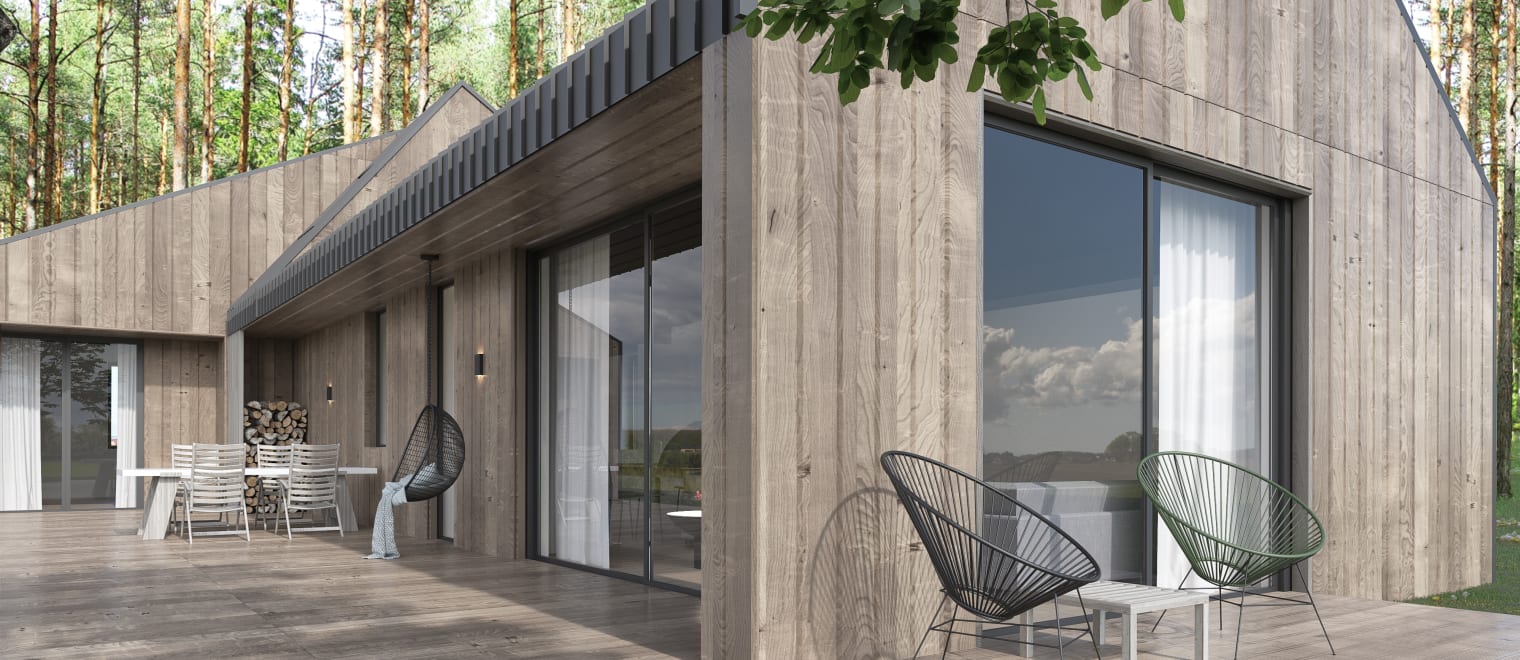This informal CPD article, ‘Timber cladding: the weathering process and its implications for design’, was provided by Russwood, a UK supplier of high-quality, sustainable timber flooring, cladding, decking & interior cladding products.
Timber is a natural material which is experiencing consistent growth in its use within the architectural environment each year. However, core elements of its inherent cellular design are widely unknown; one of which being the weathering process. This educational article seeks to explain the weathering process of timber, before providing detailing solutions which would aid its architectural specification in regard to weathering.
What is weathering
When left uncoated, all species of timber will weather to a silver-grey colour over time. ‘Weathering’, or oxidisation, is caused by three intrinsic exposures: sunlight, rainfall and changes in moisture content. Wood is a hygroscopic material, which means it has an inborn characteristic of absorbing and releasing moisture from its surroundings. This process of expanding and contracting (moisture content rising and falling) from both the air and rainfall is a key element of the weathering process and is responsible for ‘cupping’ (or warping) in less stable, low-quality timber. Natural weathering does not affect the structural integrity or performance of timber, merely the appearance.
This visual element of the weathering process is the colour change from the timber species’ original tone to a grey, silvery tone. This occurs when sunlight’s UV rays break down the lignin in the surface wood cells. Depending upon the environment, this process can take from a few months to several years. The resulting weathered grey colour is an organic tone which is frequently the desired aesthetic for timber cladding. This is because it provides a neutral, balanced facade which can be combined with other building materials easily.
Understanding weathering
When the weathering process is understood both visually and scientifically, architects, specifiers, contractors and domestic builders can utilise this organic process and consider it as part of the overall project rationale. Depending on the aspect and structure of a building, timber cladding will always weather to a grey tone over time. The weathered grey tone can be pre-emptively selected as the ‘final’ finish of the facade and be left to weather in relation to the rest of the building. This was historically a more rustic design philosophy, but in recent years the muted grey tone of weathered timber cladding has become a more common and desired finish on contemporary projects.
Differential weathering
‘Differential weathering’ refers to weathering that occurs unevenly due to the aspectual and structural design of a building. South and West facing facades weather faster due to higher exposure to sunlight, with North and East facing facades weathering more slowly. This is further influenced by overhangs and soffits, which can produce further differential weathering. Regarding rainfall and moisture, areas of a building’s facade which are wetter or more prone to wind-driven rain weather much faster than drier areas.
These combined influences can create weathering that is uneven or even unsightly. There are also, however, treatments available that aim to delay weathering or minimise differential weathering. UV oils can be applied to timber cladding to maintain the initial wood tone for a longer period of time, and silicon-based coatings can be applied to produce a ‘consistently weathered’ finish.
Conclusion
The weather process of timber cladding is an unavoidable and beautiful process which is inherent to wood’s cellular design. To ensure the most consistent naturally weathered finish to timber cladding, the aspect, structure, overhangs and soffits of the building should be considered throughout the design process to aim for all facades to have as equal exposure as possible. If these considerations are met with negative design implications, there are coatings which can delay or accelerate the weathering process. However, all timber will weather to a grey tone over the course of its lifetime.
We hope you found this article helpful. For more information from Russwood, please visit their CPD Member Directory page. Alternatively, you can go to the CPD Industry Hubs for more articles, courses and events relevant to your Continuing Professional Development requirements.













